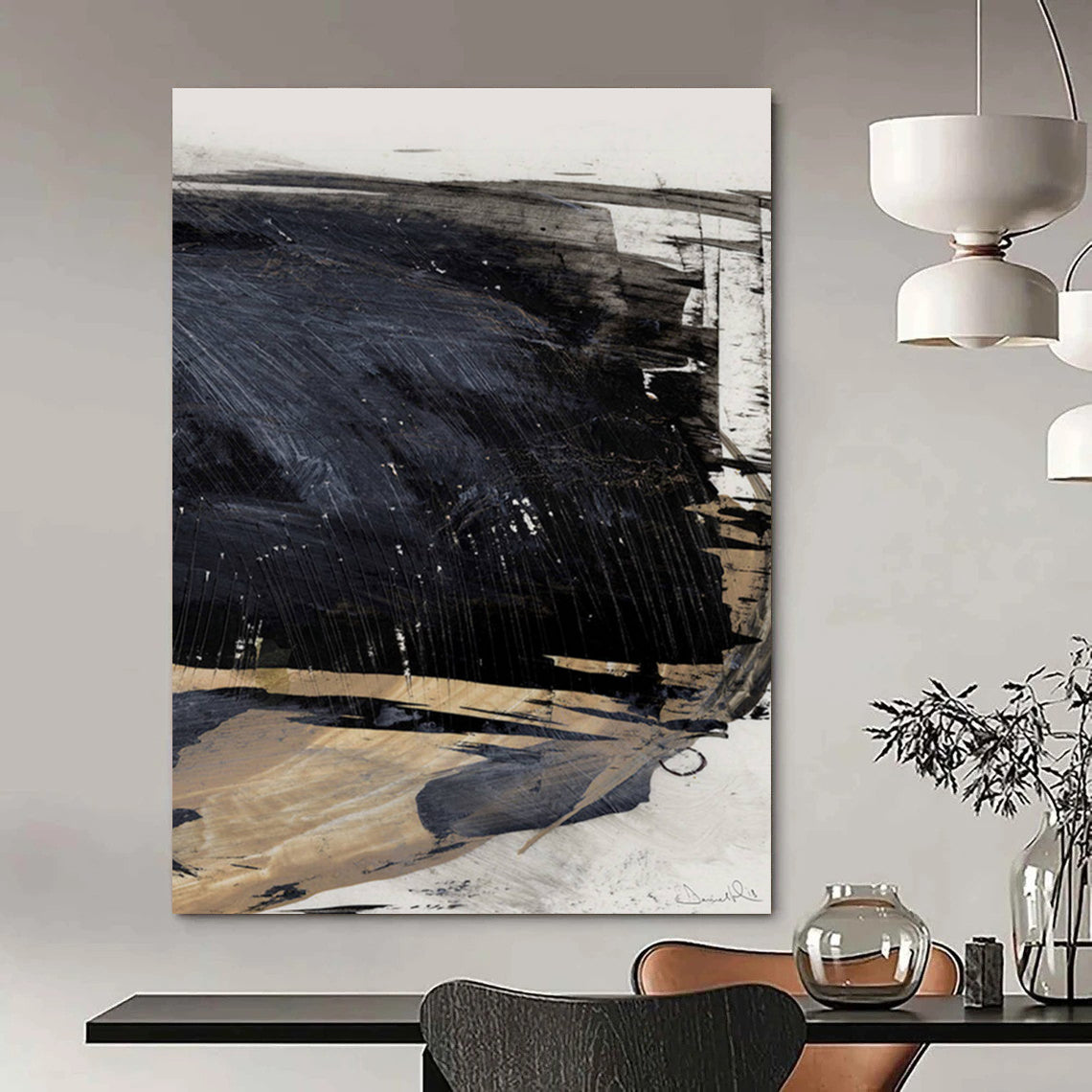Gold leaf art represents a captivating fusion of ancient craftsmanship and modern creativity, where delicate sheets of pure gold are meticulously applied to surfaces to create shimmering, luxurious masterpieces. This technique has adorned everything from religious icons to contemporary abstract paintings, infusing artworks with an ethereal glow that captures light and evokes a sense of opulence. In today's art scene, Gold Leaf Art collections often feature oversized, textured canvases that blend abstract designs with metallic accents, perfect for elevating home decor or office spaces. The allure of gold leaf lies not only in its visual impact but also in its historical significance, as it has been used for millennia to symbolize wealth, divinity, and timeless beauty.
The origins of gold leaf art trace back to ancient civilizations, where artisans hammered gold into ultra-thin sheets for decorative purposes. In ancient Egypt, gold leaf was employed to gild tombs and statues, believing it connected the mortal world to the divine. This practice spread across cultures, influencing Asian traditions where gold was integral to Buddhist sculptures and temple decorations. For a deeper dive into these foundational methods, explore the comprehensive overview provided in resources like the Britannica entry on gold leaf, which details the hammering process known as goldbeating and its evolution over time. Similarly, the technique's role in illuminating manuscripts and architectural elements highlights its versatility, making it a staple in art history.

One of the most prominent periods for gold leaf art was during the Byzantine era, when it was extensively used in mosaics and icons to create radiant backgrounds that symbolized heavenly light. Byzantine artists mastered the application of gold leaf to achieve a sense of depth and spirituality in their works, often depicting religious figures against golden fields. This style not only preserved religious narratives but also influenced later European art movements. To understand this better, the Wikipedia page on Byzantine art offers insights into how gold leaf techniques were brought to Italy, sparking innovations in Renaissance painting. The shimmering quality of these pieces continues to inspire awe, reminding us of art's power to transcend time.
Moving into the modern era, gold leaf found a revolutionary voice through artists like Gustav Klimt, whose "Golden Phase" redefined symbolism and sensuality in painting. Klimt's iconic works, such as "The Kiss," incorporate gold leaf to blend human forms with ornate patterns, creating a dreamlike atmosphere. His travels to places rich in mosaic traditions fueled this style, resulting in pieces that fetch record prices at auctions today. For more on his life and contributions, the Gustav Klimt biography provides a thorough examination of his techniques and legacy. Another exemplary piece is Klimt's "The Kiss," where gold leaf forms intricate halos and backgrounds, as explored in detail on Smarthistory's analysis of Gustav Klimt's The Kiss. These works demonstrate how gold leaf can elevate emotional expression in art.
Beyond historical figures, contemporary artists continue to innovate with gold leaf, experimenting with mixed media to address modern themes. In abstract art, gold leaf adds texture and dimension, turning simple canvases into dynamic statements. Techniques have evolved, but the core process remains accessible even for enthusiasts. If you're interested in trying it yourself, a practical guide can be found in how to apply gold leaf, which breaks down steps from surface preparation to sealing for lasting results. This hands-on approach demystifies the craft, allowing anyone to incorporate gold leaf into personal projects.
The history of gold in art is rich and varied, spanning from medieval illuminations to Victorian avant-garde experiments. Artists have long harnessed gold's symbolic power, whether in religious contexts or as a commentary on economy and value. A fascinating exploration of this can be seen in the brief history of gold in art, which covers its use by masters like Giotto and Fra Angelico in creating luminous effects. Such resources underscore gold leaf's enduring appeal, as it adapts to new artistic visions while retaining its classic elegance.
In essence, gold leaf art bridges the past and present, offering a medium that is both technically challenging and visually rewarding. Whether adorning a gallery wall or a home interior, its reflective properties create an interactive experience with light and space. As artists push boundaries, gold leaf remains a symbol of innovation and luxury in the art world.
FAQ
What is gold leaf art? Gold leaf art involves applying thin sheets of gold to surfaces like canvas, wood, or paper to create decorative or fine art pieces with a metallic sheen.
How is gold leaf made? Gold leaf is produced by hammering pure gold into extremely thin sheets, a process that has remained largely unchanged for thousands of years.
Can I apply gold leaf at home? Yes, with the right tools and adhesives, beginners can apply gold leaf following step-by-step guides, though practice is recommended for best results.
What are some famous gold leaf artworks? Notable examples include Gustav Klimt's "The Kiss" and Byzantine mosaics, where gold leaf enhances symbolic and aesthetic elements.
Is gold leaf art expensive? The cost varies based on the gold's purity and the artwork's scale, but imitation gold leaf offers an affordable alternative for similar effects.
How do I care for gold leaf art? Keep it away from direct sunlight and humidity, and dust gently with a soft brush to maintain its luster over time.

